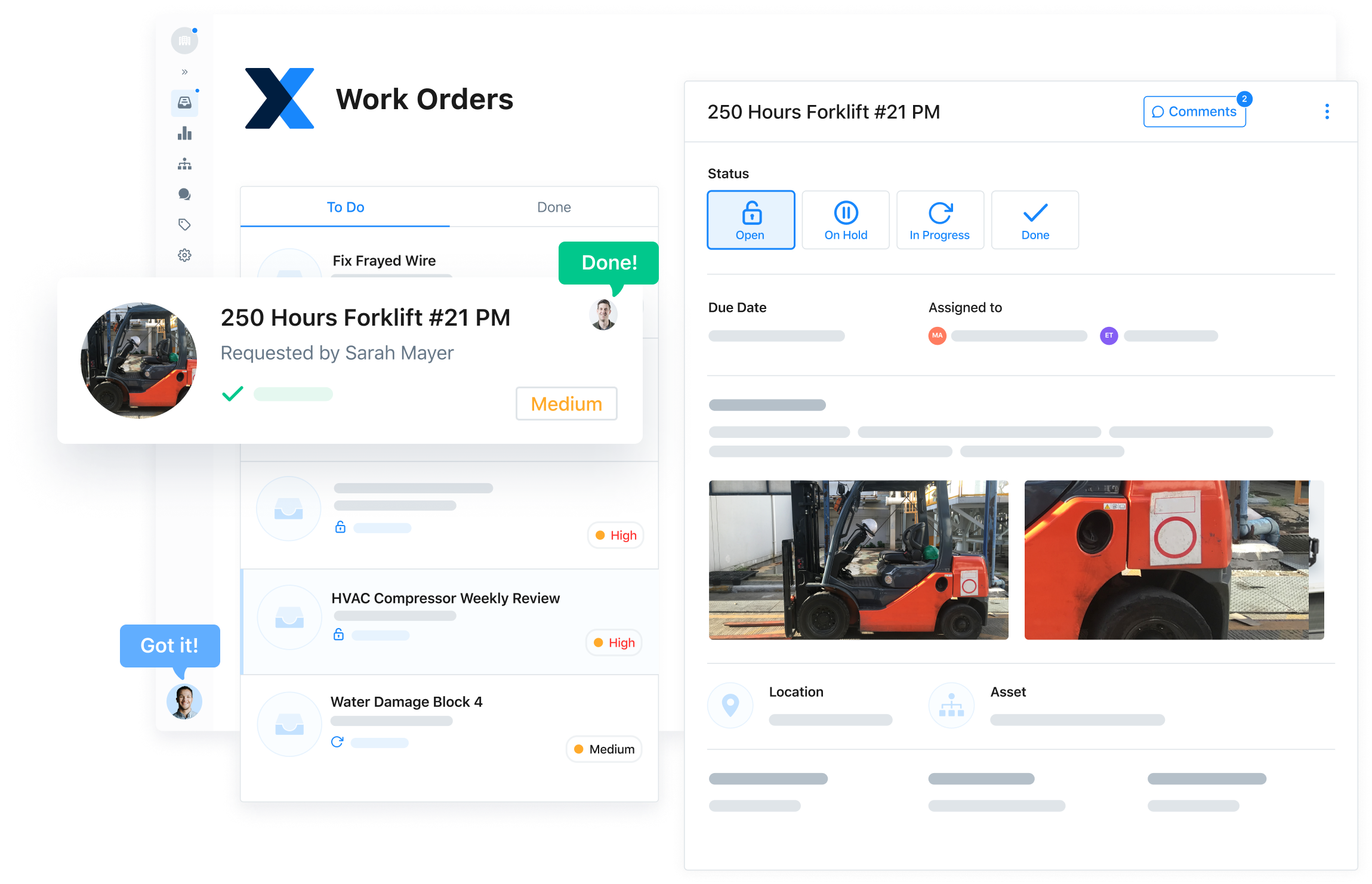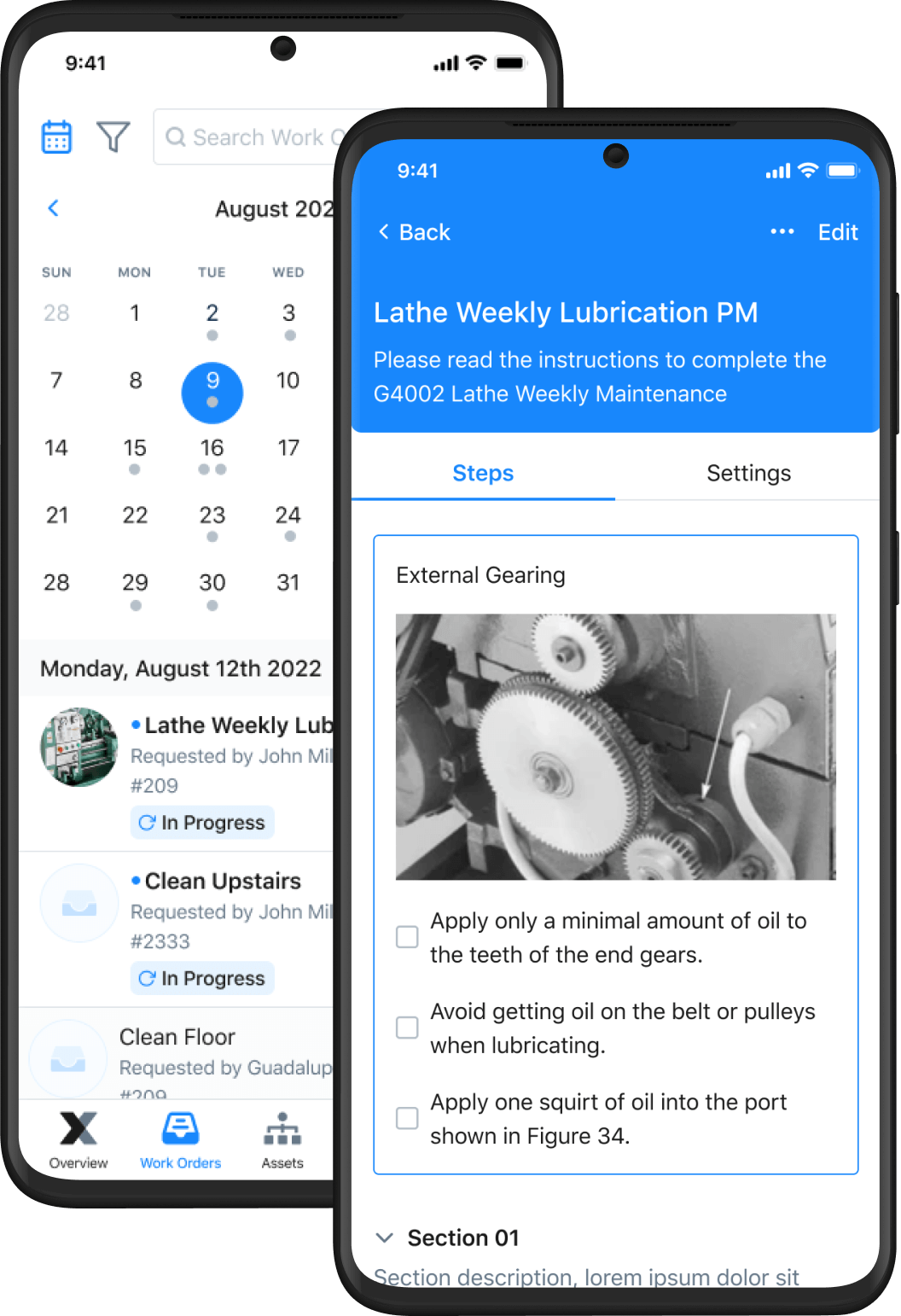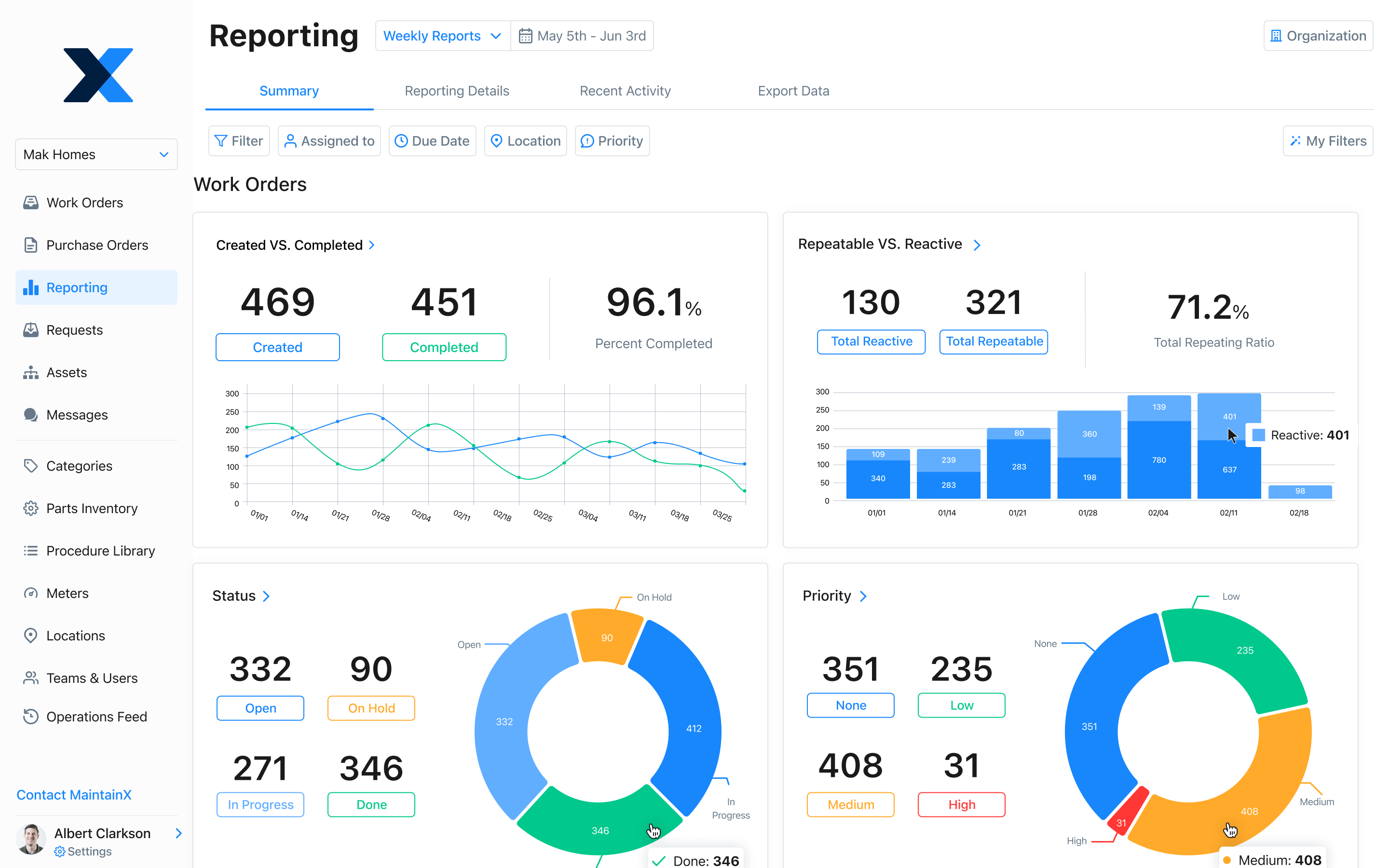
For maintenance managers and operations leaders in asset-intensive industries, the work order management system marks the difference between reactive firefighting and proactive strategy. If your team is struggling to stay on top of routine maintenance tasks, your workflows might need a tune-up.
We'll walk through the components of effective work order management, from initial planning through scheduling and execution, plus practical strategies for using modern computerized maintenance management system (CMMS) technology to simplify your operations.

Key takeaways
- Scheduling work orders based on asset criticality and optimal intervals prevents both over-maintenance and under-maintenance, saving time and resources.
- By using a modern CMMS like MaintainX, you can automate requests, monitor the entire work order lifecycle, and build standard operating procedures for your team.
- Optimizing your work order process reduces unplanned downtime and lowers overall maintenance costs.
What is work order management?
Work order management is the process of receiving, reviewing, organizing, executing, and tracking all maintenance tasks within your organization.
An effective work order management system helps you assign your resources—technicians, parts, and time—efficiently to keep critical assets running, minimize production interruptions, and control maintenance costs.
This system transforms reactive repairs into a structured, proactive workflow.
The work order planning process
You can modify the process to suit your needs, but the right workflow for a work order should include the following steps in some form.
Creating a work request
The work order management process begins with a work request. This involves someone identifying a task and then submitting the request.
Important information to include in an effective work request includes:
- Asset details: Equipment ID, location within the facility, and current condition
- Task description: Specific maintenance need (e.g., "bearing replacement on Line 3 conveyor")
- Priority level: Critical, high, medium, or low based on production impact
- Supporting documentation: Photos, sensor readings, or inspection reports
For a smooth workflow, create a standardized approach to submitting maintenance requests. One way to standardize the process is to create a work order template with preset fields that staff must fill.
To make the process even smoother, consider using CMMS software instead of pen-and-paper forms. McKinsey reports that using digital work management software improves maintenance labor productivity by between 15 and 30 percent.
For Cardinal Glass, digital work orders have saved the team significant time. “In MaintainX, I love that I can make certain fields required for work orders: like take a picture and tell me what’s wrong,” says the team’s maintenance manager. “We can look at the picture back in our shop, and we’re able to decide what we should do and get everything we need to repair it. So back-and-forth trips have definitely been reduced.”
Creating the work order
Next, the work request becomes a new work order. In some cases, this is automatic. Work order management software can automate the process for your staff, making it easier to create service orders.
This part of the process involves assigning maintenance tasks to the correct team or staff members. While automatic work orders are helpful, an approval phase prevents problems like duplicate service requests.
You can also decide whether this should be a one-off work order or a repeatable one, and whether to execute immediately or schedule for later. Many organizations create work orders in advance following a set preventive maintenance schedule.
Carrying out the task
When you use a CMMS to assign work orders, staff receive assignments instantly with all necessary information through email or mobile devices. Here's where software really pays off—you can track when technicians receive work orders, begin tasks, and complete them.
Tracking this information is vital for performing analysis as part of your facility asset management.
Historical work order data reveals trends and insights for optimization. For example, if specific work orders consistently take longer than expected, you can investigate the root cause and streamline the process.

Completing the work order
Once technicians complete their tasks, they close out the work order and log all work details according to your standard processes. Documentation should include parts used, time spent, and any issues encountered during the repair.
Reviewing the process
The review stage means verifying both the completed work order and the asset's condition. For corrective procedures, ensure all repairs meet standards, technicians follow safety protocols, and equipment operates properly.

Work order scheduling
Now that you’ve identified the steps in your team’s workflow, the next step is ensuring these steps are executed efficiently. This is where preventive maintenance scheduling comes in. By strategically scheduling recurring work orders, teams can stay ahead of equipment failures and keep operations running smoothly. Follow these steps to create the ideal schedule for your preventive maintenance work orders.
1. Decide on a scheduling system
There are two primary ways to organize preventive maintenance work orders: fixed schedules and floating schedules.
Fixed maintenance schedules follow specific time or equipment usage intervals. For example, a food processing facility schedules daily sanitization of mixing equipment, while a manufacturing plant lubricates production line bearings every 1,000 operating hours.
Floating schedules focus on time intervals tied to previous task completion. In a multi-site logistics operation, dock door inspections start 30 days after the previous inspection closes, ensuring consistent maintenance regardless of scheduling delays.

2. Inventory assets
Maintenance managers need detailed records of their organization's most critical assets. A CMMS with asset tracking functionality provides teams with clear visibility of assets and their usage patterns.
This visibility helps teams stay on top of preventive tasks. CMMS solutions like MaintainX offer asset tracking tools including barcodes and QR codes that provide instant access to equipment data, usage history, and maintenance records.
3. Decide on priorities
Prioritization matters when you're running maintenance with limited staff and parts. You must rank equipment by importance to avoid wasting resources on non-critical assets while critical equipment fails.
A criticality analysis determines priorities by ranking assets according to risk potential in categories like financial impact, operational importance, environmental consequences, and health and safety concerns.
4. Determine ideal intervals
To avoid over-maintaining and under-maintaining assets, determine the best intervals for running preventive maintenance on each asset.
Use these sources to set maintenance frequencies:
- Manufacturer recommendations: Equipment manuals and warranty requirements
- Historical data: Past failure patterns and repair frequencies
- Usage intensity: Operating hours, production cycles, or environmental conditions
- Regulatory requirements: Safety inspections and compliance mandates
For example, a food processing plant requires daily cleaning cycles for mixers due to FDA requirements, while the same equipment in a paint facility needs only weekly maintenance. Technicians and operators can also offer insight into asset performance patterns.
5. Schedule recurring work orders
Once your preventive maintenance intervals are in place, the next challenge is scheduling PM tasks while keeping everything organized and accessible. Spreadsheets and paper forms can only go so far. A CMMS ensures no preventive maintenance task falls through the cracks by enabling scheduled work orders with automatic recurrence.
With a modern CMMS, you can create detailed work plans that include work instructions, estimated hours, locations, assets, and other relevant information.
You can simplify maintenance work orders further by using checklists and templates that standardize procedures across your team.

Using a computerized maintenance management system to improve work order management
A CMMS is a powerful way to simplify work order management, allowing maintenance teams to focus less on paperwork and more on keeping assets running.
Build standard operating procedures and checklists
Standard Operating Procedures (SOPs) help your team handle work orders the same way every time. A good CMMS allows you to design and store SOPs as documents in the cloud or templates that guide technicians through each task.
Automate work requests
Move beyond pen-and-paper, text, or email requests to streamline your work request process. A CMMS provides one place for staff to submit work requests and for managers to assess and approve them efficiently.
The system also automates approved work orders, creating recurring schedules for routine maintenance activities. Advanced setups include condition-based and predictive maintenance workflows with sensors and meters that trigger work requests automatically when equipment needs attention.
Monitor your work order lifecycle
CMMS platforms maintain detailed records of all work orders from initiation through completion. Staff log activities, tasks performed, and outcomes throughout the process, creating valuable historical data.
This information proves essential for audits, compliance verification, and future maintenance planning. The data reveals patterns that improve maintenance strategies and resource allocation.
The final word on work order management improvement
Effective work order management is the foundation of reliable operations in asset-intensive industries.
We built MaintainX specifically for frontline professionals who need mobile-first tools that actually work. Our platform unifies work order planning and asset tracking into one powerful system.
Ready to move beyond paper-based processes and cumbersome systems that hold your team back? Sign up for free and experience how improving your work order management can drive real results.
Work Order Management FAQs
What are the main functions of work orders in manufacturing facilities?
Work orders serve five core functions: task identification, resource scheduling, work dispatch with clear instructions, documentation for compliance, and formal task closure. This structured approach ensures you track every maintenance action and contribute to overall plant reliability.
How do work orders differ from purchase orders in maintenance operations?
Work orders approve and detail labor tasks for maintenance jobs, while purchase orders procure parts and materials from vendors. A work order often triggers a purchase order when you need specific parts to complete the maintenance task.
What metrics should maintenance managers track for work order efficiency?
Important metrics include Mean Time to Repair (MTTR), Planned Maintenance Percentage (PMP), schedule compliance, and work order backlog. These key performance indicators (KPIs) show how quickly teams resolve issues and whether you have adequate resources to meet maintenance demand.








.webp)